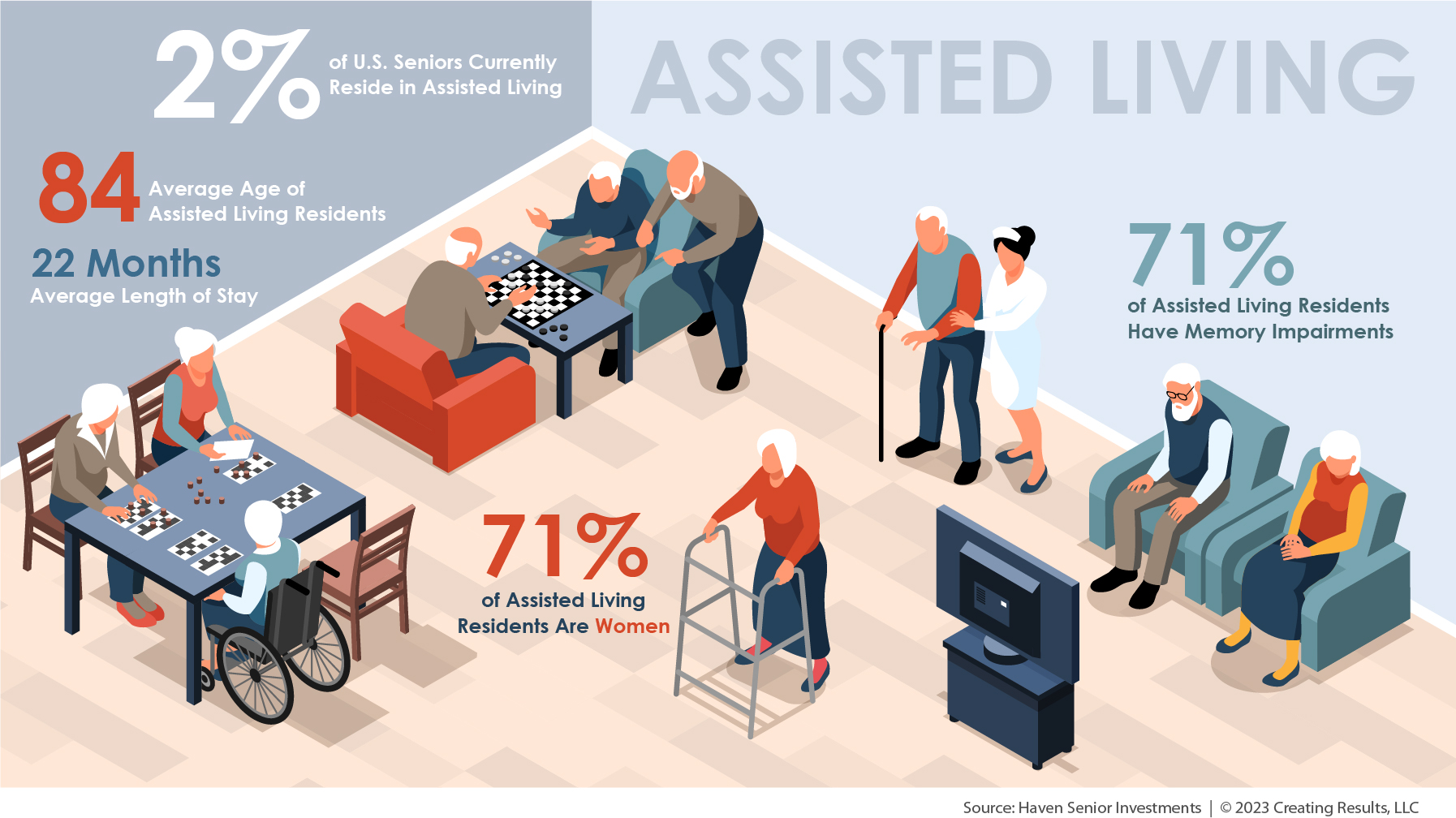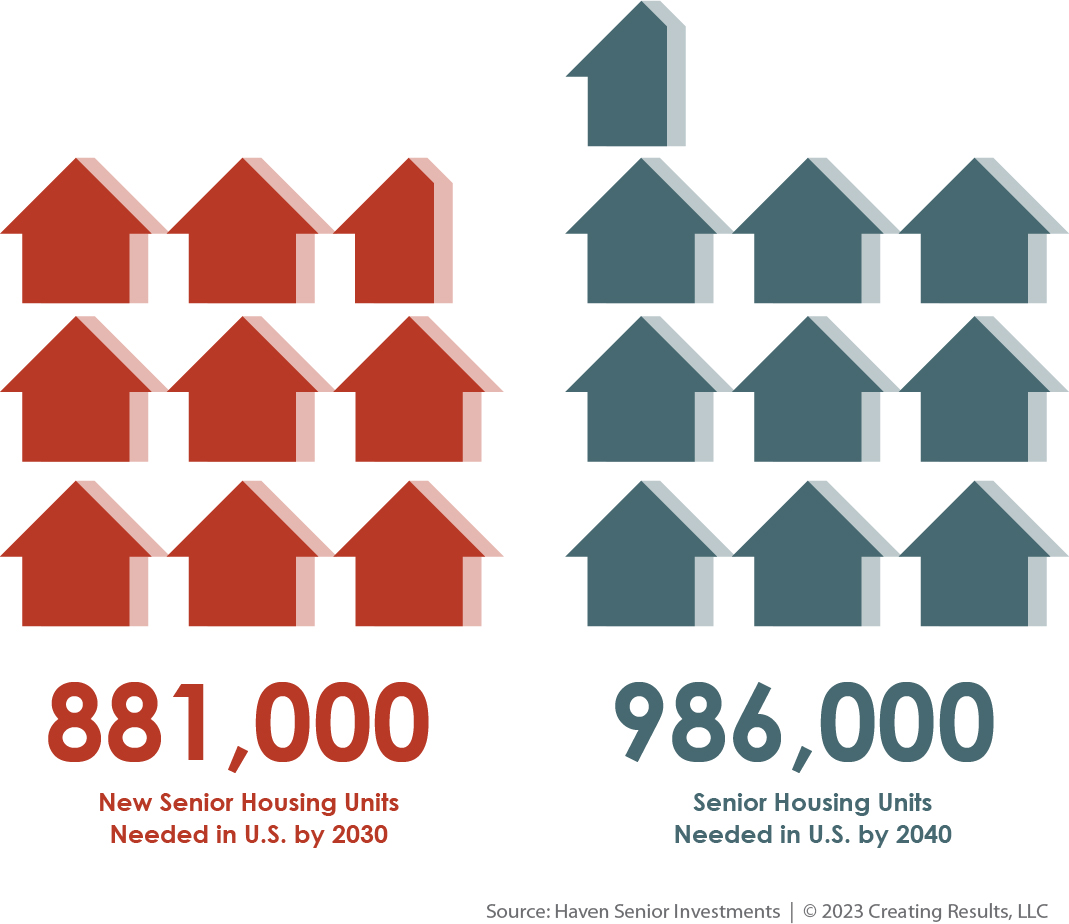In the bustling ecosystem of senior living, understanding industry trends and future growth trajectories is essential. As professionals in the senior living industry, we’re all striving to offer the best possible care to residents while staying attuned to demographic shifts, evolving care models and emerging opportunities. One of the critical questions asked: “Is the assisted living industry growing?” The answer to this question, based on current and projected data, is a resounding “Yes!” Let’s dive deeper to understand the current state, anticipated developments and overall outlook for our industry’s growth.
The current state of assisted living

Projected growth and trends
You’ve heard it before: The demographic projections show a dramatic increase in the senior population in the coming years. According to Baker Tilly, more than 46 million older adults are age 65 or older in the U.S. today. But by 2050, this number is expected to nearly double to almost 90 million. As the Baby Boomer generation ages, now is the time for senior living providers to prepare. The demand for senior services is projected to rise significantly in 2028 and beyond.


The National Investment Center’s (NIC’s) research further supports these growth predictions. It projects that the U.S. will need nearly 881,000 new senior housing units by 2030 and about 986,000 by 2040. Additionally, the NIC estimates that around 8.2 million Americans will be living with Alzheimer’s or dementias just 7 years from now, driving the need for assisted living and memory care specifically. It also points out that fewer family members and spouses are available to provide care for loved ones, especially given high divorce rates among older adults.
The outlook on assisted living growth
While the demographics point to a growing need for assisted living, the industry also faces some significant challenges. Increasing labor shortages and rising operational costs are major concerns for an industry heavily reliant on people for providing care services. Challenges in staffing, coupled with increasing expenses related to rising wages, insurance costs and other operational expenses, are putting pressure on operators’ margins.
That being said, the NIC still sees reasons for optimism. The value proposition of senior housing — providing security, socialization, care coordination and a fulfilling lifestyle — remains strong. As the senior population continues to grow, the demand for these services is expected to rise.
In conclusion, while the assisted living industry is indeed growing, it faces some notable challenges to overcome. However, the increasing number of aging adults suggests a bright future and continued growth for the industry. After all, the primary driving force of this industry isn’t just the numbers — it’s the people, their needs and their desire for dignified, comfortable care.



